Izabela Bołoz's Intersections modules interlock to form street furniture
Dutch Design Week 2014: The interlocking modules of this street furniture by Polish designer Izabela Bołoz form flexible seating for members of the public to sit, recline or climb on (+ slideshow).
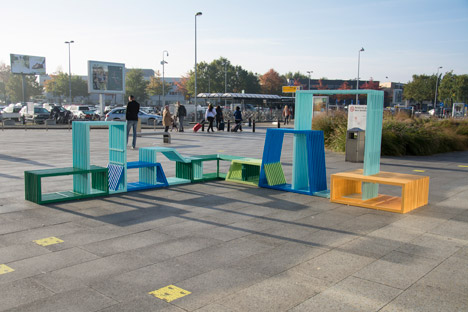
Izabela Bołoz, who is currently based in Eindhoven, created the Intersections modules so the user can decide whether to meet and talk, sit and rest or climb and play. Ranging from 45 centimetres to 180 centimetres in height, each piece is made from a series of identical geometric wooden frames.
The frames are stacked horizontally and attached together, leaving a space between each one equal to its depth. This construction means that modules can be slotted together like comb teeth, with the individual frames of one module sliding into the spaces between frames in the next.
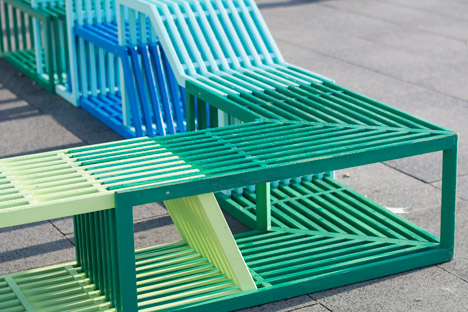
"The elements are light and portable. I used painted wood to make a flexible, temporary installation, which can be transported and arranged in multiple ways," Bołoz told Dezeen.
"We are currently developing a permanent version of this project for a city in Poland which will be made out of different materials, mainly metal."
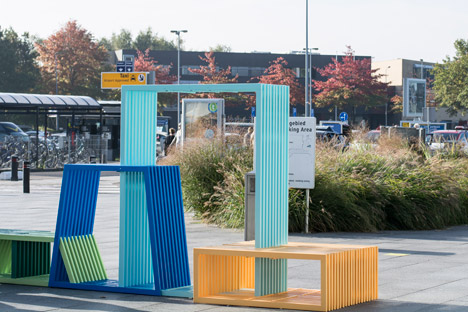
Originally designed for the Gdynia Design Days event, Intersections references the Polish city's Modernist architecture. "Gdynia is a beautiful Modernist city, built completely from scratch in the 1920s and 1930s," Bołoz said.
"The architects of that period often played with geometry and forms, merging volumes together. I wanted to create an installation for the city inspired by this principle of interconnected volumes."
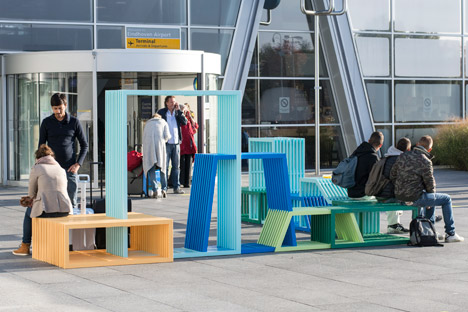
The system's flexible nature means that the modules can be arranged differently to suit the location, and the various module shapes mean it can be used for a number of purposes that Bołoz intends users to define for themselves.
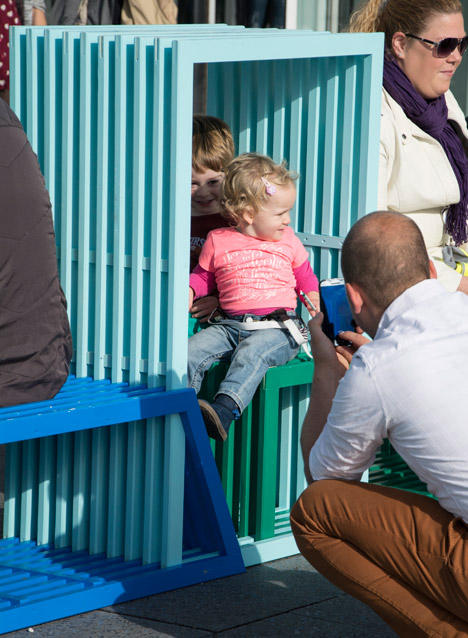
“I hope that people will enjoy this installation and interact with it, and that it will inspire spontaneous behaviour. From the very beginning, people have felt very comfortable with it, and to our surprise started using it even before we had finished the installation," said Bołoz.
"Children love to go through the forms, sit inside or climb on top, which is very nice to see. Adults use it mainly for sitting or gathering around. With regard to interaction, I think it's very successful.”
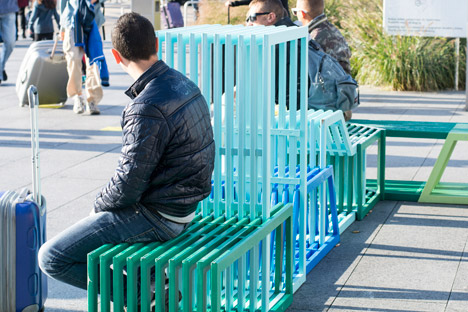
Intersections is currently on show at the Muzeum Miasta Łodzi for this year's Lodz Design Festival, as part of an exhibition of other projects from Gdynia Design Days.
A version has also been installed at Eindhoven Airport as a teaser for Dutch Design Week and will move in front of the TAB building in Strijp T for the festival itself.
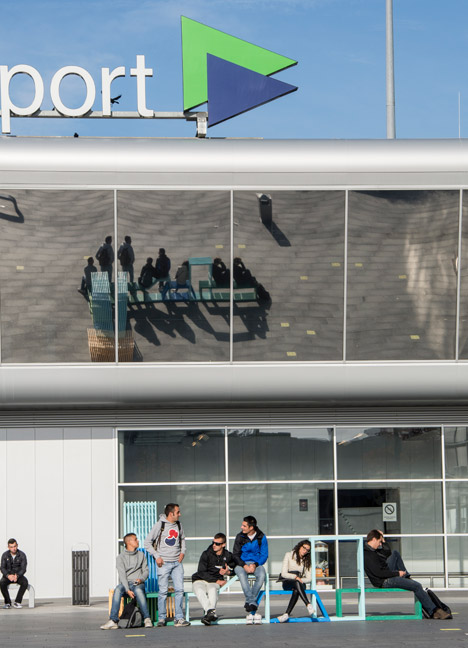
Izabela Bołoz studied social science in Wroclaw and Zurich before studying design at Kingston University and Design Academy Eindhoven. She established her own studio in 2011.